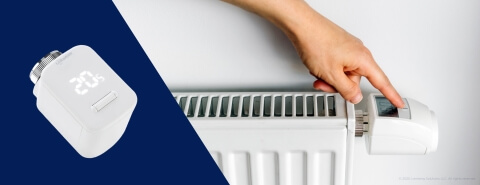
Enhancing the range and power efficiency of a smart thermostat with LoRaWAN
About the client
Eurotronic Technology has been a leading provider of smart heating solutions for homes and businesses for over 25 years. Focusing on innovation and sustainability, Eurotronic delivers high-quality, user-friendly solutions that contribute to sustainable energy consumption.

The challenge
Eurotronic offers a diverse selection of thermostats based on wireless communication protocols like WiFi, Zigbee, etc. They turned to us for assistance in developing the thermostat radio module software based on LoRaWAN stack protocol. We were tasked with the following objectives:
Delivered value
Solution
Together with the Eurotronic team, we started by scoping the product features, analysing software and electronics architecture, communication protocols, power consumption, and other project requirements like budget and delivery timeline. We closely collaborated with the client’s team, writing software for the LoRaWAN radio module, while also providing expert support with schematic design and PCB design of a few revisions of the LoRaWAN module, which was handled by the client's team.
How it works
The LoRaWAN radio module provides seamless communication between the cloud and the control PCB of the device for efficient data and control commands exchange. The client’s thermostat is mounted on the radiator and is equipped with a motor that regulates the room temperature by controlling the radiator's valve square size and thus heat carrier being circulated in the radiator.
When the user changes the temperature on the thermostat, the LoRaWAN radio module transmits the message to the LoRa gateway, which then sends it to the cloud for processing. After the device receives control messages from the cloud, the LoRaWAN radio module sends updated instructions to the control board via serial interface. The control board, then, adjusts the valves square size using the DC motor to regulate the room temperature.
Enegy efficiency optimization process
To optimize the thermostat’s energy efficiency and achieve an average of 70 mW power consumption, we partially re-worked existing ST LoRaWAN library to force low-power mode in between data transactions. The device functions according to LoRaWAN device specifications and spends most of the time in class A to obtain the lowest possible power consumption. It switches to class C with higher power consumption only for the over-the-air updates, then returns to class A as soon as possible.
The thermostat synchronizes with the cloud every few minutes to check all the updates while keeping power consumption minimal. We conducted several tests on different types of antennas and configurations of LoRaWAN to ensure optimal low power consumption while maintaining the long-range communication capability.
Secure OTA updates implementation
As the client’s team was in the process of developing their cloud server, we used open-source cloud solutions to test that everything ran smoothly. We used cloud servers to verify data exchange between the device and the cloud and for the over-the-air (OTA) updates. To ensure the security of OTA updates, we implemented firmware image signing, encryption and an integrity check, which protects data from being corrupted or substituted during transmission. Also, we implemented self-testing firmware to run a diagnostic check, verifying that the thermostat hardware functions as intended for manufacturing.
As a result of our successful cooperation, Eurotronic is preparing to launch a LoRaWAN-based thermostat on the market in Q1 2025.
We're extremely satisfied with the robust firmware that the Lemberg Solutions team delivered for our LoRaWAN-based thermostat controller – it operates reliably even under demanding conditions. The low power consumption performance is within our expectations, ensuring extended battery life without compromising functionality. This firmware delivery reflects a deep understanding of both LoRaWAN protocols and energy-efficient embedded system design by the Lemberg Solutions team.
